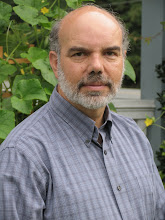I'm continuing to make my way through War and Peace and the trip gets more interesting the further I get into it.
In my last blog entry about Tolstoy's novel I wrote about Prince Andrew Bolkonski and how interesting and tragic his relationship with his wife was. After her death, he went on to an engagement with Natasha Rostova, a much younger woman. This way of "moving on" seemed to lessen his revelation concerning the love for his wife and presented a weaker picture of Bolkonski, especially in his relationship with his father, who disapproved of his engagement.
Tolstoy was brilliant in the way he wove multiple plots into the novel. All the characters seem to know each other and to affect each other's plans, but they all have their own stories.
I'm now at the point of the story where Nicholas Rostov is spurred on by the adrenaline rush of a battle, captures a French officer, and earns the St. George's Cross. What is fascinating about this section is the internal struggles Rostov goes through with his own fears and the way he conquers them. From what I have read about Tolstoy I feel he was very different from Rostov, yet as a writer he was able to go into Rostov's head completely. I've never been in a war, yet I felt I understood what Rostov was feeling.
Tolstoy was born in 1828, seven years after the death of Napoleon. Yet Tolstoy has included Napoleon as one of the characters of War and Peace and has given the readers as complete a study of his emotions as he has with any of his other characters. This makes the novel a historical fiction while providing what is most likely one of the best pictures possible of how the French Emperor thought. Again, so much is happening in this book and it is all fascinating.
Saturday, September 17, 2011
Subscribe to:
Post Comments (Atom)







No comments:
Post a Comment